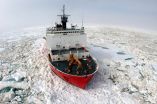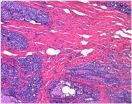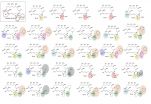How long can Ebola live?
Pitt researcher publishes article showing that the literature is lacking, receives NSF grant to conduct further study
2014-12-10
(Press-News.org) The Ebola virus travels from person to person through direct contact with infected body fluids. But how long can the virus survive on glass surfaces or countertops? How long can it live in wastewater when liquid wastes from a patient end up in the sewage system? In an article published Dec. 9 in the journal Environmental Science & Technology Letters, Kyle Bibby of the University of Pittsburgh reviews the latest research to find answers to these questions.
He and his co-investigators didn't find many answers.
"The World Health Organization has been saying you can put (human waste) in pit latrines or ordinary sanitary sewers and that the virus then dies," says Bibby, assistant professor of civil and environmental engineering in Pitt's Swanson School of Engineering. "But the literature lacks evidence that it does. They may be right, but the evidence isn't there."
Bibby and colleagues from Pitt and Drexel University explain that knowing how long the deadly pathogen survives on surfaces, in water, or in liquid droplets is critical to developing effective disinfection practices to prevent the spread of the disease. Currently, the World Health Organization guidelines recommend to hospitals and health clinics that liquid wastes from patients be flushed down the toilet or disposed of in a latrine. However, Ebola research labs that use patients' liquid waste are supposed to disinfect the waste before it enters the sewage system. Bibby's team set out to determine what research can and can't tell us about these practices.
The researchers scoured scientific papers for data on how long the virus can live in the environment. They found a dearth of published studies on the matter. That means no one knows for sure whether the virus can survive on a surface and cause infection or how long it remains active in water, wastewater, or sludge. The team concluded that Ebola's persistence outside the body needs more careful investigation.
To that end, Bibby recently won a $110,000 National Science Foundation grant to explore the issue. His team will identify surrogate viruses that are physiologically similar to Ebola and study their survival rates in water and wastewater. The findings of this study will inform water treatment and waste-handling procedures in a timely manner while research on the Ebola virus is still being conducted.
INFORMATION:
ELSE PRESS RELEASES FROM THIS DATE:
2014-12-10
A team of researchers from the Cockrell School of Engineering at The University of Texas at Austin and environmental testing firm URS reports that a small subset of natural gas wells are responsible for the majority of methane emissions from two major sources -- liquid unloadings and pneumatic controller equipment -- at natural gas production sites.
With natural gas production in the United States expected to continue to increase during the next few decades, there is a need for a better understanding of methane emissions during natural gas production. The study team ...
2014-12-10
A happy worker is a productive worker. That adage may be true, according to a new study from The University of Texas at Dallas.
Two UT Dallas public affairs researchers found that family-friendly policies are beneficial for increasing productivity of employees in public organizations, and the authors said the finding likely lends itself to job satisfaction and commitment.
The study, published in the Public Personnel Management, investigated the effects of family-friendly human resources policies in public organizations. Using the Korea Workplace Panel Survey data from ...
2014-12-10
New school and office workspace designs created by a group of Penn State engineering students are intended to allow users to share space and materials while maintaining their own work areas -- a dual purpose the researchers say has been neglected.
The research began in 2010 as a class project, according to Joseph M. Mahoney, former Penn State graduate student, now assistant professor of mechanical engineering, Penn State, Berks. "There's a lot of interest from an ergonomics perspective and workplace efficiency perspective of designing workstations for single users," Mahoney ...
2014-12-10
In the depths of the Arctic Ocean, buried deep in the sediment, an ancient creature waited for over a million years to be discovered. Paul Valentich-Scott, from the Santa Barbara Museum of Natural History (California), and three scientists from the United States Geological Survey (USGS, Menlo Park, California), Charles L. Powell, Brian D. Edwards, and Thomas D. Lorenson were up to the challenge. Each with different expertise, they were able to collect, analyze, and identify a new genus and new species of bivalve mollusk.
The path to discovery is seldom simple or easy. ...
2014-12-10
Breast cancer is the most common in women. One in nine will suffer breast cancer over their lifetime. Progress in prevention and early detection, and the use of chemotherapy after surgery (adjuvant chemotherapy), have achieved significantly increase survival in this disease in the last ten years, but much remains to be done.
The identification of patients with high-risk breast cancer is key to knowing whether a patient will require only the removal of the tumor by surgery or whether if she will need additional chemotherapy to make sure the removal of breast cancer cells. ...
2014-12-10
Malaria is one of the most serious health problems worldwide, registering 200 million clinical cases and more than 600,000 attributable deaths per year, according to information from the World Health Organization in 2013. Given the emerging resistance to the standard treatment most widely used throughout the world, which is based on artemisinin and its analogs, there is a need for new antimalarial compounds.
In this regard, scientists headed by Lluís Ribas de Pouplana, ICREA researcher at the Institute for Research in Biomedicine (IRB Barcelona), report on a new ...
2014-12-10
This news release is available in German. FRANKFURT. Frankfurt physicists have once again contributed to resolving a disputed matter of theoretical physics. Science has long since known that, contrary to the old school of thought, helium forms molecules of two, three or even more atoms. Exactly what helium consisting of three atoms looks like, however, has been disputed by theoretical physicists for about 20 years. Besides the intuitive assumption that the three identical components form an equilateral triangle, there was also the hypothesis that the three atoms are ...
2014-12-10
Patients suffering from the world's most common heart rhythm disorder can have their long-term outcomes significantly improved with an aggressive management of their underlying cardiac risk factors, according to University of Adelaide researchers.
Atrial fibrillation (AF) is increasingly responsible for dementia, stroke and death, and has a significant impact on healthcare costs. With electrical "short circuits" believed to be responsible for the abnormal beating of the heart in AF patients, one currently used treatment is to burn the tissue surrounding the problem area, ...
2014-12-10
Mammals that lived during the time of the dinosaurs are often portrayed as innocuous, small-bodied creatures, scurrying under the feet of the huge reptiles. In reality, this wasn't the case, and a new fossil from Madagascar further underscores this point, revealing fascinating perspectives on the growing diversity of Mesozoic mammals. Vintana sertich had previously been described in a preliminary note in November of this year, but a new memoir in the Journal of Vertebrate Paleontology delves far deeper into the morphology and paleoecology of this amazing fossil animal. ...
2014-12-10
A simple supplement could be a safe and cost-effective way of reducing heart disease in individuals born with a low birth weight, suggests research from the University of Cambridge. The study, carried out in rats, also raises the possibility of developing a blood test to indicate how much damage there is in the aortas of these individuals.
Researchers at the Institute of Metabolic Science fed low birth weight rats a supplement of the molecule co-enzyme Q (CoQ) and found that in those rats that grew quickly after birth, the supplement prevented cells in the aorta from ...
LAST 30 PRESS RELEASES:
[Press-News.org] How long can Ebola live?
Pitt researcher publishes article showing that the literature is lacking, receives NSF grant to conduct further study




